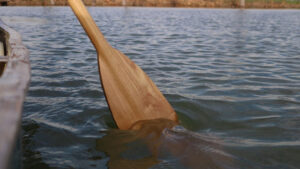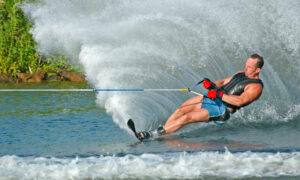The sunshine and warmer weather create an irresistible pull from nature, making it the perfect time to head out for a hike, take in some camping, or tackle the rapids. But no activity comes without risks, so while you’re out and about this summer take precautions to enjoy the outdoors without injury. Avoid the common rolled ankles, shoulder strain, back pain, and pulled muscles with these activity-focused pointers to help out on the trail or water.
Backpacking
If you enjoy a naturistic backpacking trek into the backwoods, you are probably familiar with some of the aches and pains that come with hefting a heavy load. There’s nothing wrong with a good whole body workout, but make sure you’re using proper body mechanics so you don’t find yourself limping back to home base.
First off, travel light. Only take what you need and keep your pack and all supplies at no more than 20% of your body weight. Remember that water is your heaviest item with one gallon weighing over eight pounds. Plan to source water on the trail and bring a quality filter instead of packing more than you need each day. When loading your pack, put your heaviest items at hip level and lightest items at the top for better balance and less muscle strain.
When lifting your pack, face it and use proper lifting techniques to bring it to your knee or a nearby log. Then rotate it over your back from a standing height without jarring weight shifts. Alternately, have a backpacking buddy lift your pack for you.
Also take the time to adjust your pack correctly. A maladjusted pack can cause a host of neck and back issues. If you don’t know how to do this, head to REI or other sporting goods store for a professional fitting.
Hiking
Whether you’re hauling an overnight pack or even a day pack (which should remain less than 10% of your body weight), the mechanics of safe walking are the same.
Most important is to wear the proper shoes. Flip flops won’t cut it. Your gym shoes might not be the best option either. And definitely stay away from flat-bottom street shoes. They don’t offer support for your feet, which can lead to issues with alignment in your hips and back. Instead, invest in shoes meant for the trail. Options include hiking sandals, hiking shoes, and hiking boots. Make sure you break them in before hitting the trail too. Blisters make for a very unpleasant time. Sometimes they are inevitable, so be sure to bring along moleskin and tape to cover the area at the first sign of a hot spot (irritated spot from rubbing before a blister forms).
A walking stick or poles are a great way to help you balance and avoid falls, especially with a pack on, during elevation changes, on loose gravel or uneven ground, or when maneuvering stairs. Walking aids also help prevent twists, sprains, and strains.
Paddling
When summer arrives, the water beckons. Whether your jive is river kayaking, canoeing the lake, or white water rafting, use proper paddling techniques to avoid shoulder, elbow, neck, back, and wrist injury.
First off, don’t take on more than you can handle. Paddling is not a benign activity and many torn and dislocated shoulders can prove it. Make sure the level of activity you choose matches your training and conditioning.
Protect your arms all the way up the line by avoiding overextension. It might sound simple, but when you’re battling the current, it needs to remain in the forefront of your mind. Keep some flex in your elbows as you row. Also make sure to keep your hands in front of you at all times. This means not allowing them to move past your shoulder. To gain a longer stroke, use torso rotation instead.
 Skiing and Tubing
Skiing and Tubing
Other water activities like water skiing, tubing, kiteboarding, and windsurfing are great exercise and also fraught with opportunity for strains and even dislocations, so head in with a plan.
Ankle injuries are by far the most common ailment related to these activities because of the jarring motion as you hit the water. This can also affect the knees, back, neck, and shoulders. Protect yourself by bending your knees as you land and remain upright instead of leaning forward to keep your center of balance. This will help avoid wipe outs that can dislocate a shoulder or elbow. In all, water skiing and other similar activities are fairly low risk, so don’t let the thought of possible injuries keep you from taking up the sport. Instead, use proper equipment, learn from an experienced teacher, and work slowly to improve your skill level.
In addition to activity-specific safeguards, make sure you are in overall good health before heading out for strenuous activity. Eat right, hydrate with plenty of water and electrolytes, and be responsible with alcohol consumption so you can hit the trail or water with the right amount of energy and focus for a good time!
